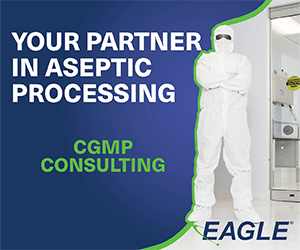Natural foods without added preservatives and without the use of thermal processes – this is what modern end consumers want. At the same time, the demand for longer shelf life and absolute product safety is also growing.
According to the German cleanroom engineering company Schilling, it is possible to do both through the use of specifically selected cleanroom technology. High-performance particulate filters offer filter performance so high that even microbiological risks such as bacteria and moulds can be kept away from the production process.
Whether bread, sausage, yoghurt, vegetables or beverages – contamination can be virtually eliminated in the manufacturing, processing, filling and packaging of sensitive goods.
The practically germ-free processing of foods not only permits a significantly longer shelf life for the products, the safety increase is also reflected in lower numbers of complaints.
In the past few years the food industry has seen a clear reorientation of hygienic production, with more and more food producers relying on the advantages offered by processing in a cleanroom.
The investment in cleanroom facilities amortises quickly due to the advantages it brings, says the company.
Good planning in advance is essential, taking the special features of the specific production process into consideration.
The Baden-Wurttemberg company specialises in the development and installation of cleanroom systems and has worked with an increasing number of food industry customers over the past few years.
Every cleanroom installation is customised to the needs of the client and planned with close coordination.
Managing Director Günther Schilling says: 'Cleanroom technology offers great advantages in food production, because the open product is protected from germs during processing. Constant, precision-directed air flows force contaminated air away from the process.'
The cleanroom enclosures used are designed for the smallest size needed for safe production.
'We plan every project on a customer-specific basis and provide support through the qualification stage,' adds Schilling.
Because the company uses high-quality materials and the latest technology, the maintenance costs of the systems are low and the investment payback is achieved quickly, the company says.
Among its solutions for food production are CleanFlowCell laminar flow housings and cleanroom tents. These are flexible, cost-effective cleanroom systems in which directed air flows are used to replace contaminated air with filtered air free of moulds and bacteria.
The systems consist of load-bearing frame structures of aluminium with PVC sheet curtains that protect products from the environment.
Product safety at the highest possible level is offered by CleanSteriCell closed cleanroom systems, developed for the strict requirements of the pharmaceutical industry. These are a free-standing 'room in room' system usually installed within production buildings.
Using a built-in air circulation process within the cleanroom walls and a permanent air exchange, constant particle cleanliness, temperature, humidity and pressure conditions can be maintained throughout the room.
Employees can only enter the cleanroom through lock systems and with suitable cleanroom clothing.
With such flexible options, built to the latest standards, cleanroom technology can be integrated into smaller plants and can contribute to further increases in the safety and longer shelf life of food products.




